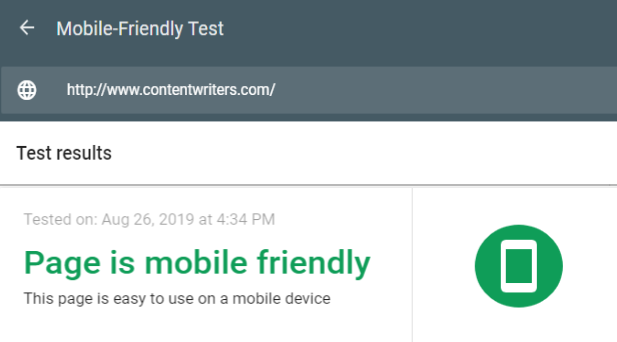
Secrets to Medical Blog Writing Success
Are you interested in starting a blog for your medical practice or facility? Or do you currently have one but aren’t sure if it’s effective? Blogs can be a very effective way of building your brand and attracting new patients, but it’s important to understand how medical blogging works and how to do it correctly. The practice of blogging in general has evolved tremendously over the past several years, and medical blogs, in particular, are subject to certain considerations.
If you want your blog to be successful, you should determine the answers to several key questions before you start writing your first post. Who is your blog for, what exactly do you hope to accomplish with it, and who will write your medical content?
What is a Medical Blog?
A blog is simply a website or section of a website that is regularly updated with new content, typically written informally and conversationally. Most professional websites these days have a blog, although it might be called something different, such as “news” or “latest stories.”
When posted on a professional website, blogs typically fall under the category of marketing and should adhere to several inbound marketing best practices. Blogs serve many purposes, but they are most often used to attract new potential customers and patients, or leads, to your website. Blogs help companies demonstrate expertise in their field and allow new leads to start building a relationship with your brand. This expertise demonstrated in your blog can help them decide if your practice is one they are comfortable trusting with their medical needs.
A medical blog will typically provide information about common medical concerns. For conditions and diseases, this information most often includes causes, symptoms, diagnosis, and treatment. Each medical blog post should be focused on one topic, and the content should be as thorough as possible.

Targeting the Right Audience
Before you start writing your blog, it’s important to understand exactly who you’re writing for. The information you present and the tone you adopt will vary greatly depending on your target audience.
For example, patients, physicians, and healthcare administrators all have very different needs. A common mistake made by new bloggers is to attempt to make their content appeal to everyone, but this can result in a blog that has very little value to your ideal audience. To make your content appeal to your ideal customer or patient, it’s critical to pinpoint their needs and speak directly to them.
One tool that can help you refine your blog content strategy is a detailed buyer persona. A buyer persona is a written description that pinpoints several key characteristics about your ideal customer or patient. How old are they? What are their socioeconomic status and education level? Do they have children? All of these things will help shape their needs and influence how you speak to them.
While it may feel like a very narrow focus to tailor your content directly to a 34-year-old work-from-home mother of three, specificity in marketing is essential for reaching the right audience and building mutually beneficial relationships with them.
How to Choose Medical Blog Topics
Once you know your audience, you can start determining which topics are most important to them. When trying to create a list of topics, the best place to start is often your existing patients. If you’re someone with direct patient contact, you are likely hearing the same questions from many of your patients. If you don’t have direct patient contact, ask the providers or front office staff to tell you what patients are most concerned about.
These frequently asked questions are your low-hanging fruit when it comes to blog topics: You know people are interested in the subject matter, and you likely don’t need to do much research to write about it authoritatively.
For example, if you offer nutritional consulting, and many of your patients are asking about the relationship between diet and seasonal allergies, you could easily write a blog post that provides a thorough overview of the topic.
If you have an existing website that already has content on it, try Google Analytics to give you some insight into what is already bringing users to your site, and what sort of information they are looking for. If you haven’t already set up Google Analytics, set up your Google Search Console so that you can see how your website is currently ranking for search queries in your industry.
Another helpful tool is Google Trends. You can enter any topic into this tool and see how the interest in it has changed over time. It will also provide suggestions on related terms that are trending or increasing in popularity. For example, a search for “seasonal allergies” on Google Trends indicates that many people are currently interested in how to tell the difference between seasonal allergies and COVID-19 symptoms. This would be an excellent topic for a blog post.

How to Write a Medical Blog Post
Once you have your topic,(s) you may find it helpful to create a rough outline. Google Trends can help with this as well. Another useful exercise is to simply type your topic into Google and see what comes up. Review the top-ranking blogs. Is there any information they are lacking? Can you write a more informative post?
In most cases, you’ll see what are known as “People Also Ask” queries. These are related questions that people have typed into Google. Often, by simply answering these questions in your post, you can develop a thorough piece of content that provides a lot of helpful information.
Special Considerations for Medical Blog Writing
In health blog writing, it’s especially important to be accurate. You cannot make false medical claims or any guarantees about outcomes. You cannot promise that your services or treatments will cure any condition or disease.
It’s also important to provide trustworthy, peer-reviewed sources. You can use PubMed to search for studies on any particular topic and include links to those studies in your content. Make sure that you are presenting the findings from the studies accurately. Do not use conclusive language like “this study proves.” Rather, use words like “this study suggests” or “the study indicates” that a certain treatment may be effective.
If the study used a small test group and further studies are needed to confirm the results, mention this in your blog. Most readers don’t want to take the time to make sense of a medical study or even an abstract. They are looking for you to provide an accurate interpretation of scientific information, so choose your words carefully.
It’s also important to include a disclaimer that medical blogs are not intended to be used for diagnosis or treatment and that anyone experiencing a medical condition should consult their doctor. This limits your liability for the medical information you offer.
Structuring Your Medical Blog Content
It’s important to understand that most people won’t read your content in its entirety. People typically scan online content and look for the information most pertinent to them. That’s why any content you post online should be broken up into short paragraphs. Use subheads and bullet points to further break up your content and make it easy to scan.
Include Graphics
Adding graphics and images can also help break up your content. When presenting statistics, include a chart or graph to provide a visual representation. People process information differently and giving your readers different options will help make your content accessible to a wider audience.
Include Videos
Many people prefer to watch videos rather than read a lengthy blog post. Consider filming a short video that presents many of the key points in your content by using bullet points or other graphics. Creating videos can present a significant time and cost investment, so this may be something you want to reserve for your best-performing content.

Check Your Mobile Layout
Mobile devices currently account for about half of all internet traffic worldwide. Your Google Analytics can tell you exactly how much of your website traffic comes from mobile devices. Make sure your content is easy to read on all devices, or you could lose readers who are interested in your content but find it hard to read on a smaller screen.
Include a CTA
Don’t leave your reader hanging at the end of your blog post; invite them to do something. Include a clear call to action (CTA) in every piece of content. That could mean asking the reader to schedule an appointment, but be careful not to ask them to do something they aren’t ready for. You need to consider where your content falls in the buyer’s journey.
Someone reading about the differences between seasonal allergies and COVID symptoms may simply be gathering information and isn’t looking to schedule an appointment at this time. Instead, you could invite them to sign up for your newsletter. If they find your content relevant and valuable, chances are they will sign up on your mailing list so they can read more and possibly share the post with friends and family.
Distributing Your Medical Content
Once your content is live, don’t just let it sit there! Get it out to your audience. You have several options for distributing your content. Post it on your social media channels with a link to your website, and include it in your next email newsletter.
When it comes to social media, be selective. This is where your buyer personas can come in. Different platforms attract different audiences, so focus your efforts on where your target audience is most likely to be spending their time.
Use Qualified Medical Writers
Chances are, you are going to need help developing all of these medical blog posts. When it comes to medical blog writing, it’s important to hire qualified medical writers to ensure the accuracy of your content.
In the past few years, Google has placed more emphasis on the concept of E-A-T — expertise, authoritativeness, and trustworthiness — for any content related to health and wellness. If you want your content to rank on search engines like Google, you absolutely must use an experienced medical content writer who knows how to interpret and accurately present scientific information.
You can also increase the trustworthiness of your content by having it medically reviewed for accuracy. Always have a doctor or nurse practitioner on staff review your blog posts before they go live.
Recruiting qualified medical content writers can take a great deal of time and effort. Consider using a medical writing company to create your blog content for you. The best medical writing companies have already done the work of vetting their writers to make sure they understand the unique considerations of medical blog writing. A good content writing company will also do the work of editing your content and ensuring that it adheres to your unique voice and brand guidelines.
Need help with your medical content strategy? Contact ContentWriters today to discuss your content goals.
займы онлайн без проверок срочноShe is the Director of Content for a medical marketing agency, and is certified in inbound marketing, content marketing, email marketing, site structure, and keyword research.




